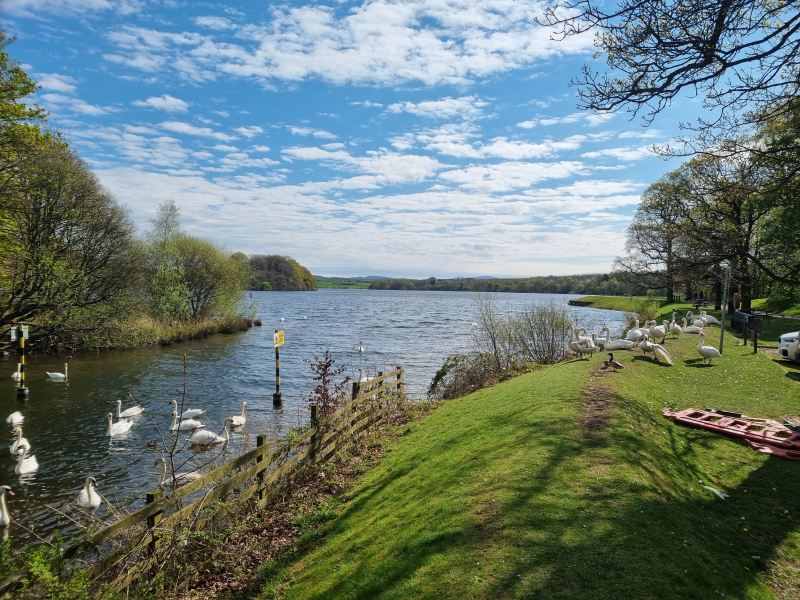Considered to be the earliest constructed reservoir in Scotland, Gartmorn Dam near Sauchie is the largest expanse of water in the county of Clackmannanshire at around 170 acres. The dam was for many years the largest artificial lake in Scotland. The dam once served as Alloa’s water supply. Today it is the centre of a nature reserve.

Gartmorn Dam, View from the Dam Head
The dam was formed on low lying marshy ground near the Earl of Mar's coal mines in the area. The original dam scheme was developed by engineer Robert Bald, working for John Erskine, 6th Earl of Mar, who, in 1700, made a dam-head and flooded the hollow at Gartmorn until it reached a depth of 11.2m (37 feet), leaving a little island in the middle.
One of the dam’s purposes was to control the flow of water and use it as a power source. It also had a use in preventing flooding locally. However, its main purpose was to drive pumps used to drain water from the Earl's coal mines. The Dam also provided a source of fresh water - good water supplies and the availability of barley from the carselands encouraged George Younger to establish his brewery in Alloa, one of several that once thrived in Alloa.
The initial temporary dam head was replaced in 1785 by one of hewn stone, but later damage to this meant that the whole structure had to be repaired in 1827 by the Alloa Colliery Company at a cost of £300.
In 1710, the Earl of Mar commissioned Derbyshire based engineer George Sorocold to write a report on how to deal with water ingress at his Sauchie mines as coal was being extracted at deeper levels than before.
Gartmorn dam until now had been fed by the Brothie Burn, but Sorocold proposed increasing its capacity by also diverting water from the nearby Black Devon river. He suggested a lade to take water from the river at Forestmill. This in turn would also potentially increase power output.
Sorocold told Erskine that two water wheels should be used to power the pumps for extracting the mine water, but the Earl ignored this advice and water was still extracted using rag pumps and chains and buckets many years later.
By the time Sorocold had completed his improvements in 1711, Gartmorn Dam had risen by 3 metres (just over 9.5 feet), making the body of water now 1.2km (0.7 miles) long by 500m (546 yards) wide.
A 1.82m (6 feet) high horseshoe-shaped weir was built on the Black Devon river at Forestmill and a two-mile-long lade was constructed to feed Gartmorn Dam. The increase in water was used to drive pumps to remove water from the mines which was diverted to an area near the dam via the Upper Lade.
The Lower Lade was used to power the industries in Alloa and in 1891 the Burgh of Alloa acquired the system.
The weir at Forestmill was rebuilt in 1835. The weir was added to the schedule of British listed monuments in 1972 and is Category B listed. The lade is no longer feeding water to Gartmorn Dam, the water now redirected back to the Black Devon just downstream of the weir.
The coal mines finally closed in the 1980's. In 2013, Scottish Water spent £440,000 to maintain the dam head and improve emergency water level reduction systems.
